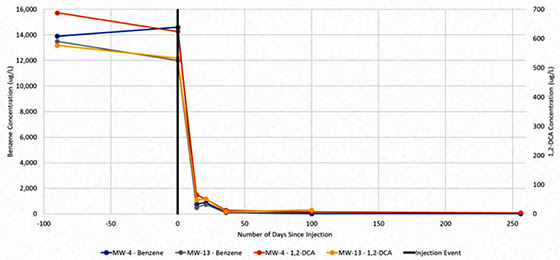
16 Jun Did You Miss Battelle? Check Out Our Poster Presentations
Did you miss Battelle? We came, we saw, we had a lot of great conversations. It was fun for the RPI group team to come together to talk about pushing the science and industry of remediation forward. In case you missed the conference, check out our poster presentations linked below.
CAT 100: In Situ Chemical Remediation Without Depletion of Metallic Iron
RPI’S CAT 100 Successfully Treats 1,4-Dioxane and CVOCS
In Situ Injections in Remote Locations
Lessons Learned About Activated Carbon Injections on a Site in Wyoming
When It Comes to LNAPL, Activated Carbon May Replace NSZD As The Best Available Closing Technology
The Overlooked & Revealed: Evidence for Microbial Biodegradation on Activated Carbon
RPI invites you to join us at our upcoming webinars
Please join AST Environmental, Inc. (AST) on Tuesday, June 21st as AST resumes our platform presentation webinar series (register here). The free, 20 minute presentation will provide an overview of the quantitative High Resolution Site Characterization process known as qHRSC, and will review the remedy design approach, in situ amendment application process and site-specific results for the project success story described below. The full AST case study for this project can be viewed and downloaded here.
AST Case Study: Quantitative High Resolution Site Characterization (qHRSC) to Support Petroleum Remediation using BOS200+®
A former retail gasoline station was not sufficiently characterized for remediation activities. Petroleum hydrocarbons were threatening nearby, off-site groundwater supply wells. AST and their client conducted a quantitative High-Resolution Site Characterization (qHRSC) consisting high-density, vertical soil sampling and groundwater sampling. The resulting qHRSC data compilation supported the design of an optimized remedial injection plan where BOS 200+® was installed by AST in a targeted treatment area. Post-injection, groundwater sampling demonstrated the reduction of gasoline constituents by 92 to 99 percent.

Figure 1. Benzene Plume with Pilot Injections

Figure 2. Benzene and 1,2-DCA Post-Injection Concentrations
Nathan Thacker, AST Senior Geologist, will cover the science behind the Remediation Products, Inc. (RPI) BOS 200+® technology, results of the site-specific qHRSC, design of the BOS 200+® injection, injection methods, and groundwater sampling results, along with lessons learned.
BOS 200® and BOS 200+® have been responsible for hundreds of regulatory closures in the United States, Canada, and Europe. Decreased contaminant concentrations in groundwater and soil have demonstrated product efficacy and efficiency. RPI will bolster these accounts by presenting evidence of immediate and sustained biodegradation on activated carbon, which is unique to RPI’s activated carbon-based amendments (ACBA). Additionally, RPI has amassed significant performance data for these reactants, some of which will be presented for the first time ever.
Edward Winner, Ph.D., came to RPI in the spring of 2021 after 21 years with the Kentucky state government. During that tenure, Dr. Winner held a variety of roles, including Risk Assessor and Toxicologist, Supervisor for a Department of Energy facility, Manager of the State’s Underground Storage Tanks Branch, and Assistant Division Director. Before his time in state government, Dr. Winner worked in academia for 10 years, researching and teaching as a postdoctoral fellow studying proliferative vitreoretinopathy and variable calcium channel expression in brain and heart tissue.





Sorry, the comment form is closed at this time.